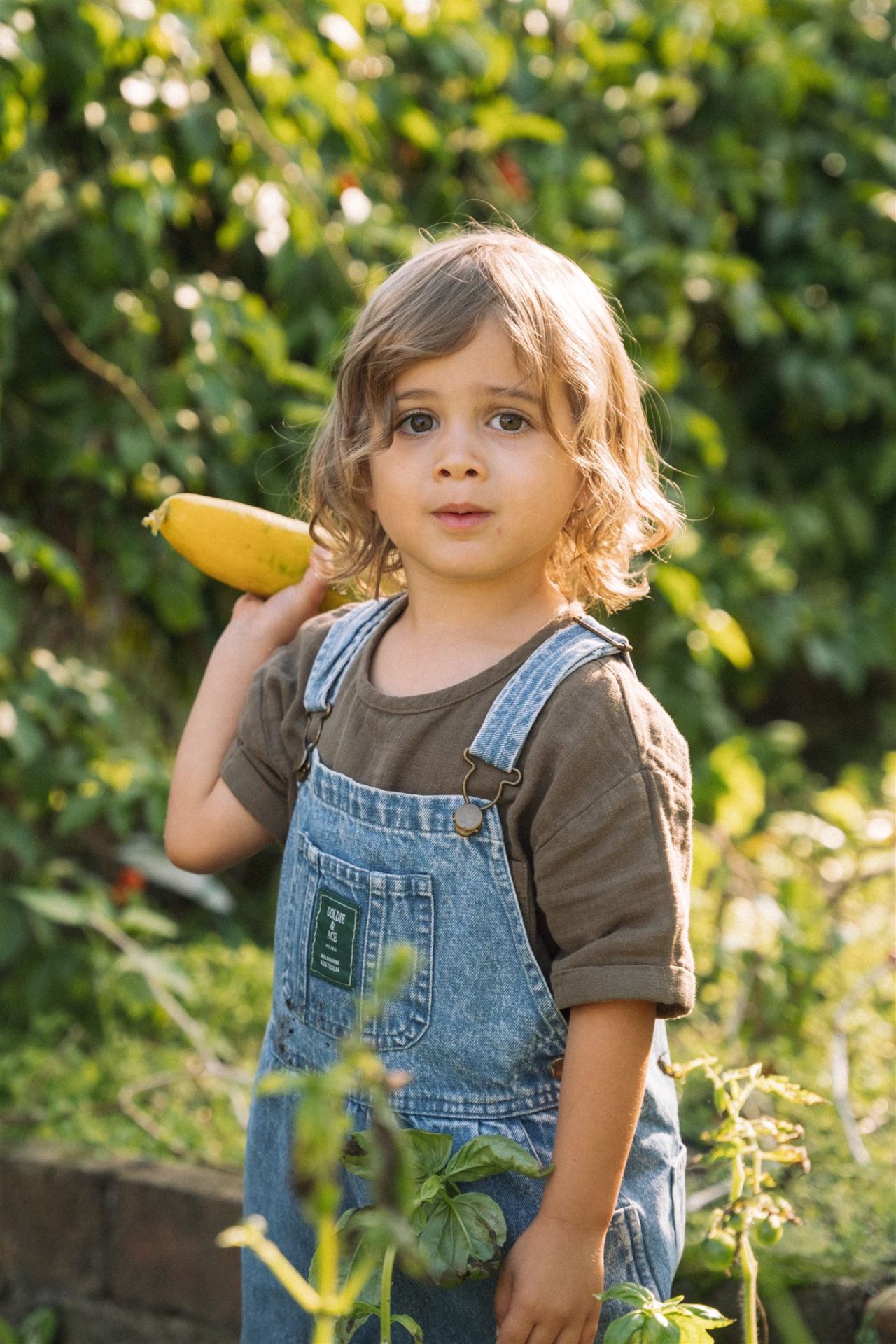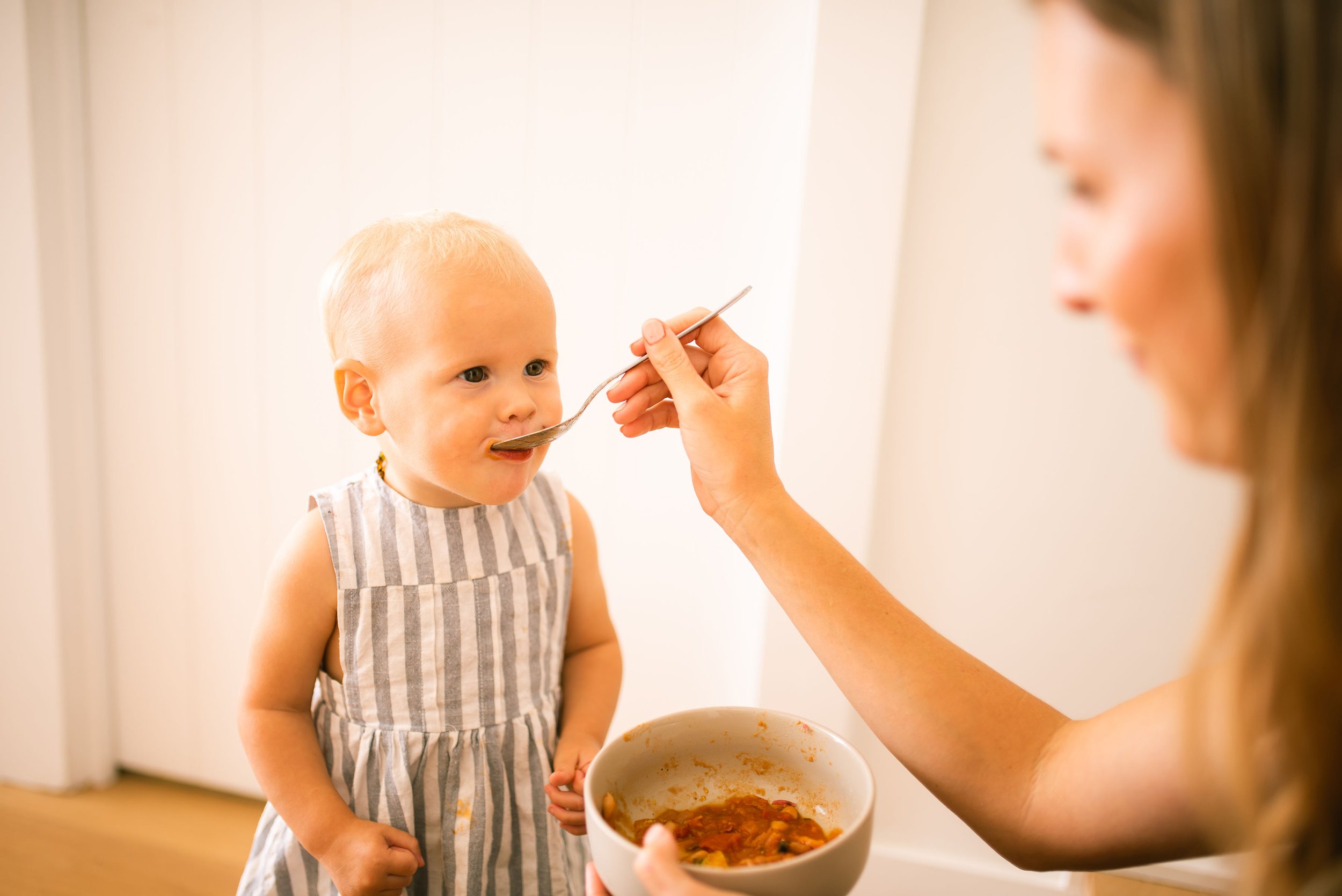Mealtimes can be a wonderful time of nourishment and connection with our little one and our family, but there are times when it can feel like an absolute battleground – especially during phases of food throwing. However, with a proactive approach, we can address these behaviours effectively. In this blog, we will explore strategies to tackle food throwing to help foster enjoyable mealtimes for everyone.
Before we jump into some strategies, let’s ask the why question – all behaviours are communicating something. Understanding the why gives us clues on how to respond effectively. Investigating patterns in mealtime behaviours can be a way of tuning in and listening to your little one’s communication.
Note: Keep in mind that for most babies up until 10 months, throwing food on the floor is developmentally appropriate. It is often one of the first ways a baby explores the pattern of cause and effect. They learn that when they initiate an action, something happens. This developmental stage is so important! However, how we respond can determine how long this phase sticks around.

Here are a few questions you can ask to help you get to the bottom of food throwing in your baby or toddler:
- When does food throwing happen? Is it towards the end of the meal or right from the start?
- Where is their focus? Does your little one look at you while they are throwing the food? Does it happen more when you are distracted or away from the table?
- What foods? Does food throwing happen with particular types of foods/textures or anything and everything?
- Is your little one coming to the table hungry?
- Does your little one look well supported in their high chair?
As you ask these questions, you will notice there are a few key things food throwing could be communicating. Here are a few of the most frequent food-throwing “why’s”, with a few strategies to try.
- “I can’t manage this food in my hands or mouth!” – Sometimes babies will throw food when the items don’t match their fine motor or oral motor skills. Maybe it’s too small or too slippery or too hard and chewy. Make sure to read our blog on Safe Food Shapes and Sizes to ensure your little one is being offered food that they can pick up, bring to their mouth, and break down and swallow.
- “I’m not hungry” – Often we can see an increase in food throwing when our children’s appetites aren’t quite ready. This is sometimes the biggest piece of the puzzle. We want to make sure meals and snacks are spaced 2-3 hours apart. When our little ones are hungry they are motivated to eat and will naturally interact with food more appropriately.
- “I don’t like this” – This is probably the most common one. There will likely be stages during your toddler’s development (often between 14 months and 4 years) where they exert their will and their preferences at mealtimes. This is ok! It is our job to decide what is on the plate and their job to decide what they eat off the plate. However, it is also ok to expect your child to communicate this in a more appropriate way! We need to teach and offer an alternative. One of our favourite strategies is a “no-thankyou-plate” or a “maybe-later-bowl”. This is where we place a second bowl or a plate next to our child’s meal and teach them to place food here instead of on the floor. This will take some initial teaching, modelling and redirection.
- “I don’t like how this feels in my hands” – Some children experience periods of tactile sensitivity where they dislike how certain textures feel on their hands. You might see your child splaying their hands, frequently wiping their hands, expressing disgust or throwing “wet” foods on the floor. You can support them by ensuring they have access to a wipe or a cloth to clean their hands as they need. You can also support them by building their cutlery skills. By age 2 we can work towards independence with a spoon and a fork.
- “There’s too much on my plate” – Your little one might throw their food if they feel overwhelmed by how much is on offer. Consider reducing how much is on their plate or letting them eat off your plate. They can always ask for more!
- “I’m finished/I’m full” – If throwing is happening towards the end of the meal, it is likely your child is indicating they are all done. Be careful how you respond! We want to redirect our child to a more appropriate method of communication. Depending on your baby or toddler’s age and communication skills you might narrate “all done”, model how to use a key-word-sign to communicate “finish”, or you might prompt and ask your toddler to verbally or gesturally communicate.
- “I’m craving attention and connection” – Make sure meal times are times of connection, fun and ideally a time where phones and devices are put away.

So what can you do during the meal to help food throwing? - At the start of the meal remind your little one, “food stays on the plate” and “food is not for throwing”.
- Depending on what you think your child might be communicating, offer your child an alternative before the throwing starts. You might try a “no-thankyou-plate”, you might offer a fork, or you might remind your child how they can appropriately communicate that they are all finished.
- If they throw, don’t react! Keep it really neutral.
- Pick up and replace the food once or twice – I usually wait a bit so this doesn’t become a game. You can remind them of the strategy discussed at the start of the meal.
- If there is food all over the floor at the end of the meal, I would involve your child in the clean up! For babies this might just mean waiting and watching you clean. For toddlers, this might mean getting them to put a piece or two on the plate or in the rubbish and for older children, it might mean expecting them to clean it up themselves (You might even be surprised what they eat during this phase 😂).
- Food throwing is a phase most children will go through (at some point or another). How we respond as parents will likely determine how long the phase hangs around for!
Written by Rachael Smith – Boob to Food Paediatric Occupational Therapist




+ show comments
- Hide Comments
add a comment